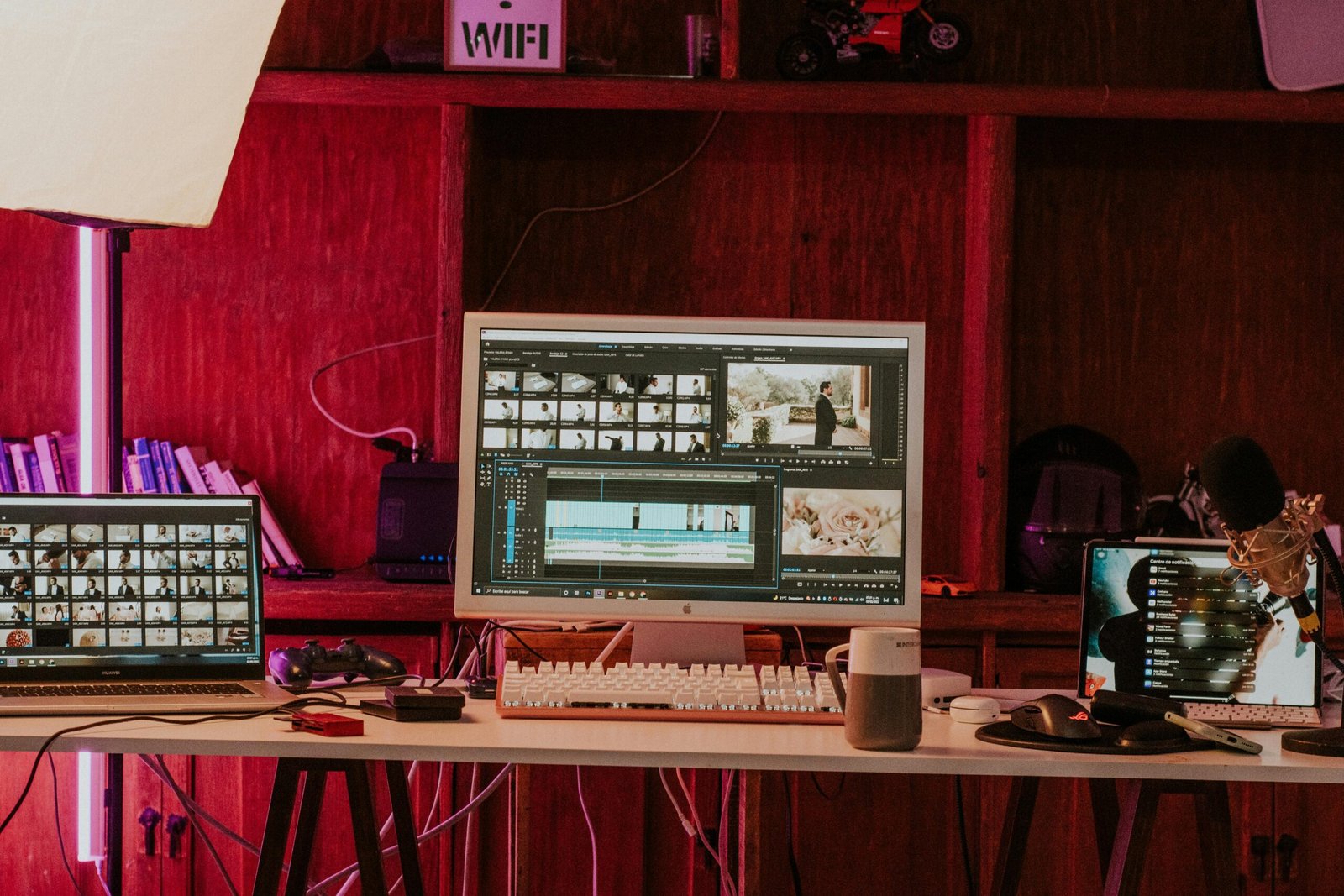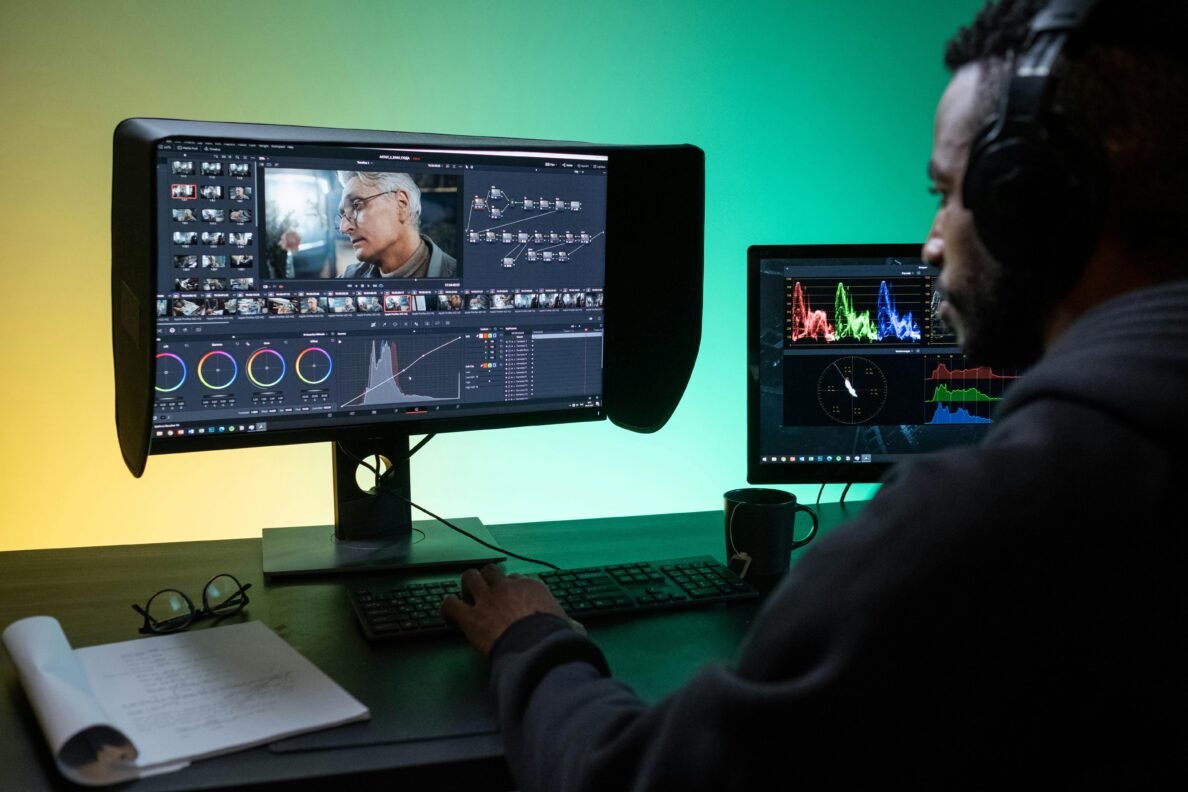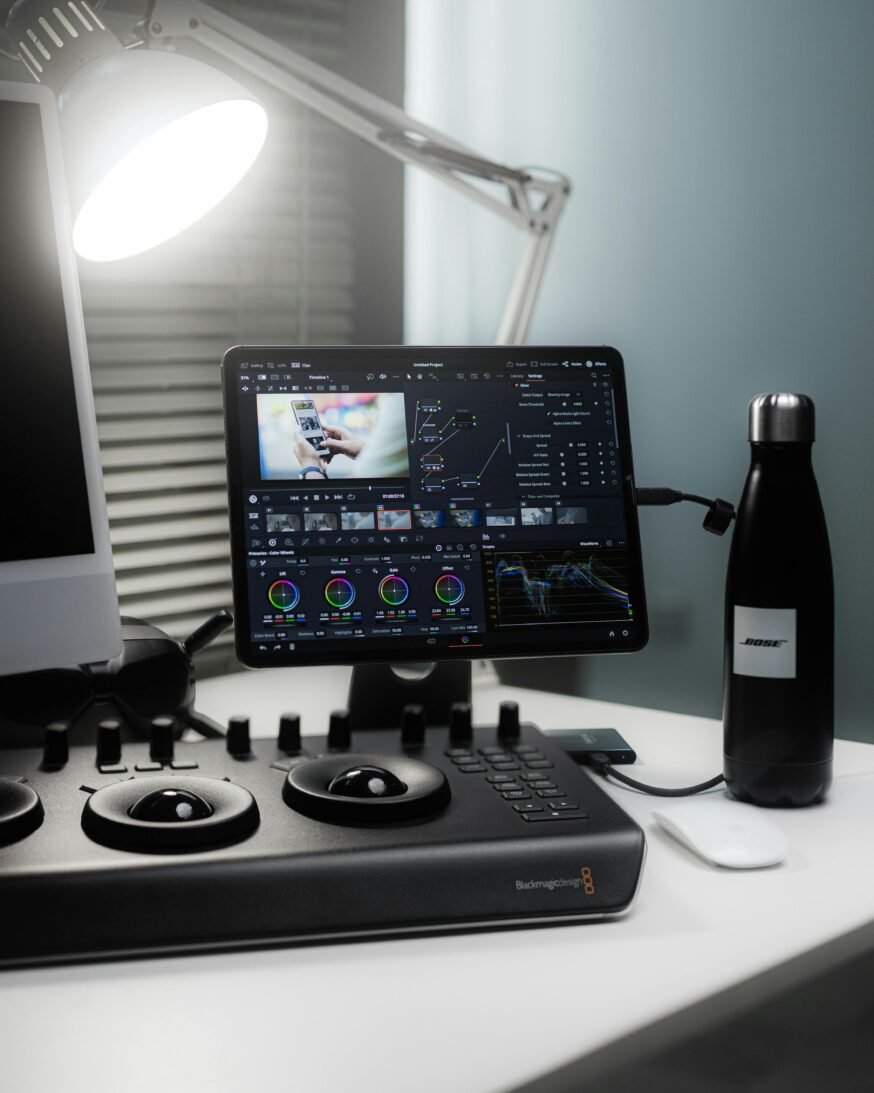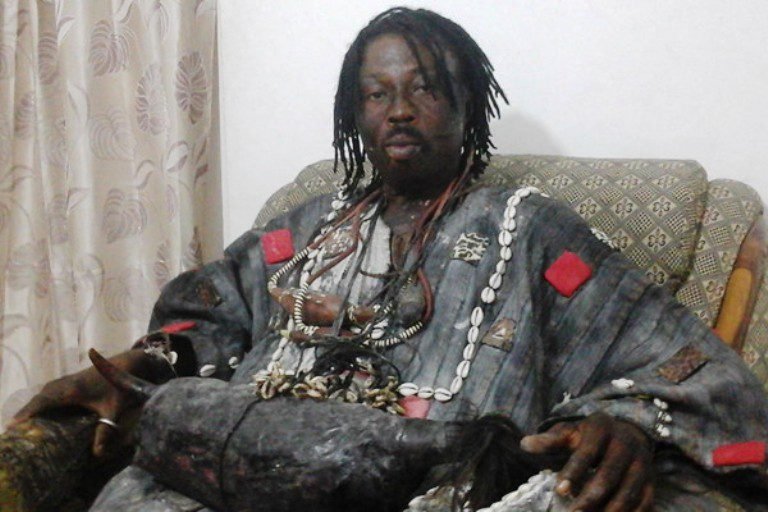5 Key Filmmaking Techniques: Mastering Video Editing and Sound Design

Filmmaking is more than just pointing a camera and recording a scene. While many people think of glamorous actors and striking visuals, the real art lies in what happens behind the scenes. Video editing and sound design are crucial components that transform raw footage into a seamless, emotional journey. Today, we’re uncovering the behind-the-scenes magic that brings stories to life.

The Crucial Role of Video Editing in Filmmaking
Video editing forms the backbone of filmmaking. After hours of footage are shot, the video editor steps in to craft the narrative, selecting the best moments and weaving them into a cohesive story. Timing is everything in filmmaking, and editors are the gatekeepers of this timing. They create the pacing that guides the audience through scenes, ensuring every moment flows perfectly.

The key to successful video editing is its invisibility. If a movie’s cuts and transitions are seamless enough that you don’t notice them, the editor has done their job well. Editors shape the story by manipulating time, space, and emotion in ways that are barely perceptible.
The Impact of Sound Design
Sound design is the emotional glue that holds a visual story together. A film with poor sound design can lose its impact, regardless of how stunning the visuals are. Sound design involves crafting ambient noises, sound effects, and dialogue to create a fully immersive experience.

Consider the impact of sound in your favorite films. The ominous footsteps in a thriller, the distant waves in a serene scene, or the heart-pounding music during a chase—these elements pull the audience deeper into the story. Sound design enhances the mood and tone without overwhelming it.
The Connection Between Editing and Sound Design
Video editing and sound design are deeply intertwined in filmmaking. They rely on each other to succeed. Imagine a suspenseful scene with no background music; it would fall flat. Conversely, even the most suspenseful music can’t save poorly timed cuts.
Sound and visuals must work in harmony. The pacing of edits often syncs with audio cues to build tension, drama, or humor. Together, they create a more impactful experience.
5 Ways Filmmaking Benefits from Great Editing and Sound Design
- Enhances Emotional Impact: Subtle edits and perfectly timed sound cues heighten the emotional tone of a scene.
- Maintains Continuity: Great editing ensures the story flows naturally, while sound design makes transitions seamless.
- Creates Immersion: Immersive sound design and smooth transitions keep the audience engaged.
- Guides Audience Emotion: The combination of editing and sound manipulates viewers’ feelings during key scenes.
- Polishes the Final Product: Post-production magic in sound design and editing refines the final film.
Why Filmmaking Matters for Content Creators
Filmmaking isn’t just for Hollywood directors. Whether you’re making YouTube videos, short films, or social media content, video editing and sound design principles can elevate your work. Good editing retains viewers, while sound design keeps them emotionally engaged.
Content creators who apply these filmmaking techniques can produce content that resonates more with their audience. Great sound and visual storytelling boost engagement, which is key for success on video platforms.
How Filmmaking Enhances Digital Storytelling
In the digital era, filmmaking principles are crucial. Video is a dominant form of communication, and mastering video editing and sound design improves storytelling. By refining these techniques, content creators can enhance engagement, increase retention, and grow their brand.
Well-edited, high-quality videos rank higher in search results. Platforms like YouTube and Google reward content that keeps users engaged. Effective sound design and editing contribute to overall content quality and shareability, improving SEO.
The Power of Behind-the-Scenes Magic
If you’re a creator, start incorporating filmmaking techniques into your content. Invest time in learning the basics of video editing and sound design, because these elements will set your work apart. In the competitive world of digital content, filmmaking skills are essential for capturing and holding your audience’s attention.
If you enjoyed learning about the art of filmmaking and how video editing and sound design elevate your content, you might also find value in expanding your digital skill set. Check out my latest newsletter, 8 Essential Digital Skills to Thrive in the Modern World. In this edition, I dive into the crucial skills needed to stay ahead in today’s digital landscape, from mastering new technologies to enhancing your online presence.














